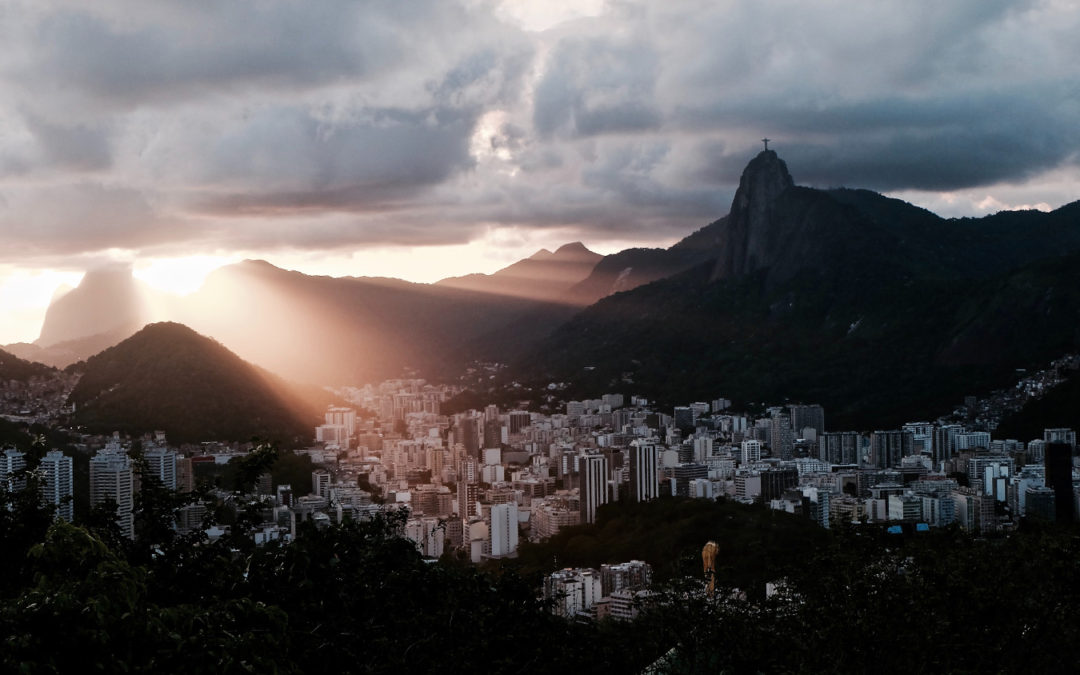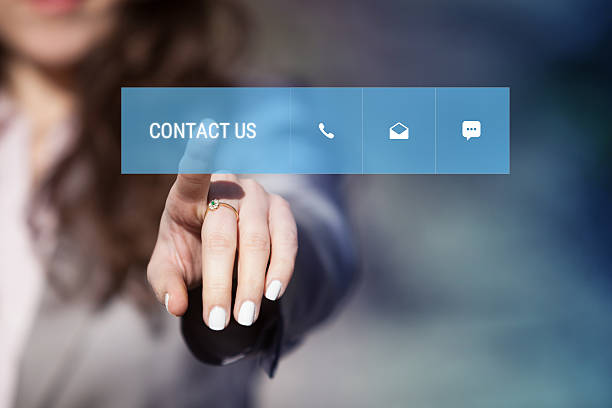Brazil is South America’s leading economic power and a regional leader. An important player to Brazil’s economy is the software industry, which consists of developers of packaged and custom software, as well as companies which have embedded software in their products and companies that develop Internet-related software.
- Political and Economic
- Business Overview
- Current Economic Overview
- Vacation Periods/Duration
- National Holidays/Festivities and Significant Events
- Office and Business Hours
- Time Zone & Time DIfference
- Ease of travel/Visa Requirements
- Currency
- Language Skills
Information and Communication Technology (ICT) has been a key contribution to the increased competitiveness of Brazil. The government’s Industrial, Technological and Foreign Trade Policy (PITCE) have given priority to the Brazilian industry of Software and IT Services (IBSS). This is a market that moves about US$ 30 billion a year internally, a number that makes it the 7th largest market in the world for technology. Over the next decade, Brazil is working to position itself among the five major IT centers of the planet.
Major cities of Brazil:
- Brasilia
- Rio de Janeiro
- São Paulo,Recife
- Pôrto Alegre
- Salvador da Bahia
- Belo Horizonte
Three of these cities stand out. Brasilia, being the national capital is the seat of politics and government, but the hub of commerce and industry is Sao Paolo and Rio de Janeiro.
Sao Paolo is the financial capital of the country. It’s the 10th highest in the world. Sao Paolo has an incomparably a much bigger market in terms of professional services and access to top talents, a bigger market for programmers as well as more opportunities for higher salaries.
Other factors that makes Sao Paolo a more attractive destination:
- Access to investments is easier
- Infrastructure is much better (cable, wireless, offices)
- Basic services are more diverse and better (accounting, lawyers, etc)
- best colleges are around or in cities nearby (USP, Unicamp, ITA, etc)
- The city is an international hub (Guarulhos and Viracopos/Campinas)
- Major local clients are based here
- Site of major tech conferences (QCon, RubyConf)
- Google established an office here (although the Developer Center of Google is based in the city of Belo Horizonte)
Rio de Janeiro is the second most important financial, commercial and cultural hub of Brazil. It has the second highest GDP in Brazil. It is headquarters to Brazilian oil, mining, and telecommunications companies, including two of the country’s major corporations (Petrobras and Vale) and Latin America’s largest telemedia conglomerate,Grupo Globo.
Other major cities like Campinas, Belo Horizonte and Porto Alegre are good choices for start ups, professional services and top-notch talents (with less cost) because the literacy level in these cities are higher and also with far more pleasant living standards.
The Brazilian Silicon Valley, so called as the countries own version of the Silicon Valley in the USA, is located in the city of Campinas. From being an agricultural region, it was developed in the 70s by the foundation of the University of Campinas (UNICAMP) along with students, researchers, engineers, and the like. A number of hi-tech companies began establishing industrial pants and R&D laboratories (such as IBM) in the area and around the surrounding areas of Campinas. The Telebras, the state holding for telecommunications also set up in the area its Center for Research and Development (CPqD). Later a law was passed by the government to protect Brazilian-made technology against imports, and this resulted in further growth.
Today,Campinas is the site to numerous high-tech, non-pollutant electrical and electronics industries such as IBM, Lucent, Samsung, Nortel, Compaq, Freescale Semiconductor, Motorola, Dell, Fairchild Semiconductor, Huawei, 3M, Texas Instruments, Celestica, Solectron and Bosch. Several industrial parks and incubators for for high tech companies have also developed, such as those in the fields of microelectronics, computers, software telecommunications.
There are factors to consider that would affect activities and mobility when in Brazil:
Weather: Most of Brazil is tropical, so it is warm all year round. The tropical northeastern has two seasons but is hardly noticeable. March to November are dry months and December to February are wet months. The winter months (June to September) are slightly wetter .The average temperature is 23° to 27° C all year round
In the southern part, their seasons are the exact opposite, with summer in December through March and winter June through September. Summers are very hot with temperatures rising up to 43°C (110°F) with high humidity.
High Season: High season in Brazil lasts from the week before Christmas until Carnaval (which falls sometime in February or early March, depending on the year). Flights and accommodations are more expensive and more likely to be full during this period.
Low Season: The months of September and October are ideal when weather is still good. Spring weather is warm days in São Paulo, Iguaçu, and Rio. Hotel prices are lower and crowds are lesser in mid-March after Carnaval until May.
| Date | Holiday / Festival |
| Jan 1 | New Year’s |
| Feb – Before ash Wed | Rio de Janerio |
| April 15 | Festivals of the Cavalhadas in Pirenópolis (Goiás). |
| April 21 | Festival of Tiradentes |
| May 1 | Labor Day |
| June (to be announced) | Corpus Christi |
| Sept 7 | Independence Day |
| October 12 | Festival of la Virgen Aparecida, Patron of Brazil |
| Nov 2 | All Souls’ Day |
| Nov 15 | Proclamation of the Republic |
| Dec 25 | Christmas Day |
During the following holidays, banks, schools and government institutions, as well as some stores, are closed all over Brazil.
There is no defined business hour in Brazil and working hours vary a lot between establishments. Stores open and close at varying hours, people go to work at different times.
Time in Brazil is calculated using Standard Time and is divided into 4 Time Zones (to include its offshore islands):
BRT (UTC-02:00; does not use DST);
BRT (UTC-03:00);
BRT (UTC-04:00);
BRT (UTC-05:00; no DST).
The Southern, Southeast and Central Western states observe Daylight Savings Time or summer time (horario de verao)
However, the main time zone is BRT (UTC-3:00), which corresponds to the time in Brasilia, the capital city of Brazil. This time zone is followed by almost 94% of the population. During summer, the time zone changes to BRT (UTC-2:00).
Requirements
- Passport valid for the next 6 months; with 2 consecutive blank pages for the visa stamp, no torn, frayed or falling parts
- Uploaded photo at http://visacentral.com/photo-service; photo will be printed according to exact specifications required for visa. Or alternatively, a colored passport-size photo may be submitted as long as it meets the following strict criteria: taken within the last three months; all-white background and printed on high-quality photo paper; must be 2in x 2in; provide full frontal view of head with the face centered in the middle, a neutral (non-smiling) expression. Eyeglasses or headwear are not allowed except for religious purposes; photo should not have marks of adhesive tape or staples.
- Copy of driver’s license, with home address clearly displayed as it appears on visa application
- Application Process
- Completed online visa application
(https://formulario-mre.serpro.gov.br/sci/pages/web/pacomPasesWebInicial.jsf)
- application must be submitted with 90 days of completion; designated number code which is provided at the end of application must be indicate
- completed application must be printed and included with the VisaCentral Application Kit
- submit electronically in advance (application, signature and all documents) prior to delivery of VisaCentral of completed visa application to the consulate
- payment of service fee: $25.00
- Supporting Documents
- Business Introduction Letter
- Be printed on your company’s official letterhead
- Display your full name, nationality, and job title
- Display your company’s address
- Specify the exactpurpose of your trip
- Specify the number of entries requested and the length of each stay
- Include your specific entry and exit dates
- Include the validity of your requested visa
- Be signed by a member of management
- Clearly state that “No technical assistance will be performed while in Brazil”
**A sample Business Introduction Letter is included for reference with the Visa Central Application Kit. The applicant’s business introduction letter must use the exact language found in the sample.
- Travel Arrangements: provide proof of travel arrangements for the duration of your trip. Details of intended arrangements must include:
- copy of an itinerary or e-ticket that displays round trip travel and entry and exit dates for destination
- Urgent Applications
For urgent visa application that carries a tight deadline, a Visa Central expert will review all documents submitted to certify that application is accurate, complete and ready for submission. Applicant will be contacted personally for corrections or revisions of entries before submission. Visit http://visacentral.com/visa-pre-check-service for this service.
Currency: Brazilian Real
Code: BRL
Symbol: R$
Exchange Rate: 1RS = US$ 0.28009 or 1USD = R$3.516
(** As of May 2016) 1R$ = € 0.24948 or 1€ = R$3.94
The official language is Portuguese, but Brazilian Portuguese differs from the Portuguese spoken in Portugal. There are no dialects of the Brazilian Portuguese but there are moderate variations in the pronunciation, lexical use, verb conjugations and personal nouns. Brazilian Portuguese is also more nasal and sounds softer than European Portuguese.
Only a small percentage speaks English.
English has replaced French as a second language among the educated.
IT Skills
Recently, the government is encouraging the internationalization of Brazilian ICT companies through the Association for Promotion of the Excellence of the Brazilian Software (Softex) and the Brazilian Agency of Promotion of exports and investments (Apex-Brazil).
The Department of Science, Technology and Innovation recently conducted an assessment of major IT programs to evaluate what can be adjusted. One of the challenges of the sector is human resources: the lack of training and human capital formation that did not accompany the massive expansion that occurred with technology boom. This lack of technical personnel, particularly programmers, meant subcontracting technology services to other countries. In Brazil, training and retaining specialized human capital is complicated.
Salaries of Web Designers
The average salary for a Web Developer is R$40,820 per year (R$60/hr). The highest paying skills associated with this job are Web Development and HTML5.
(** Annual Salary in US Dollars as of May 2016)
SAP Instructional Designer US$83,000
Lead UX Designer UP US$141,000
UX UI Designer UP US$97,000
Senior Web Designer US$73,000
Senior UX IX Designer US$92,000
Senior UX Designer US$97,000
UX IX IX Designer US$77,000
Web Designer US$53,000
Web Developer Designer US$54,000
Web Designer Developer US$63,000
Graphic Web Designer US$46,000


